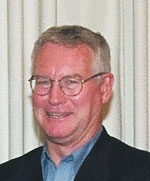The IEEE has recently (June
– 2003) approved a new recommended practice for assessing radio-frequency
(RF) energy delivered to the heads of users of cellular phones and
other personal communication devices. The standard is IEEE 1528
and is entitled “Recommended Practice for Determining the Peak
Spatial-Average Specific Absorption Rate (SAR) in the Human Head
from Wireless Communications Devices: Measurement Techniques.”
It calls out specific experimental protocols and measurement and
validation methods for hand-held wireless transceivers operating
between 300 MHz and 3 GHz. It is based on a model of the human head
filled with a fluid having microwave electrical properties similar
to brain tissue. Measurements under the standard are made using
an electric field probe that scans the tissue-equivalent liquid
inside the model head and measures maximum SAR in volumes of one
or ten grams. The model is intended to give a conservative estimate
of the SAR anywhere in the human head from a cell phone or similar
device held next to the ear. The standard addresses many complex
issues including instrumentation challenges and measurement uncertainties
of the challenging SAR measurements.
IEEE 1528 was sponsored by the IEEE Standards Coordinating Committee
34 which is responsible for the development of product performance
standards relative to the safe use of electromagnetic energy for
specific products that emit electromagnetic energy at frequencies
between 0 and 300 GHz. This happens to be the same frequency range
covered by IEEE Standards Coordinating Committee 28 – International
Committee on Electromagnetic Safety (ICES). The world-famous IEEE
C95 standards on safety of non-ionizing radiation are the responsibility
of ICES.
The new IEEE standard will help both wireless-device manufacturers
and government regulators assess compliance with the requirements
of the United States Federal Communications Commission and similar
government agencies in other countries around the world. The United
States and many other countries limit the RF energy from cell phones
and other similar personal communication devices.
The standard has been under development for a number of years and
the FCC already references the standard in Supplement C of Bulletin
OET 65. Also, the work has been coordinated with the International
Electrotechnical Commission’s Technical Committee 106 to assure
consistency with their publication on the same topic to be released
in 2004.
The standard is a “measurement technique” document and
therefore does not set any specific limits for SAR. It can be used
for assessing compliance with limits found in regulations and standards
on the SAR phenomena.
The Committee on Man and Radiation (COMAR) has issued a Technical
Information Statement (TIS) on “Human Exposure to Radio-Frequency
and Microwave Radiation from Portable and Mobile Telephones and
Other Wireless Communication Devices.” This TIS provides excellent
information on RF emissions from cellular phone handsets and can
be accessed at https://www.ewh.ieee.org/soc/embs/comar/phone.htm.
We encourage our readers to check this website and other IEEE sources
for accurate information on the continuing issue of SAR and cell
phones. EMC
|
|
|
If you would
like to contact the IEEE Webmaster |
 A
New Standard for Assessing Radio-Frequency Fields in the Human Head
A
New Standard for Assessing Radio-Frequency Fields in the Human Head